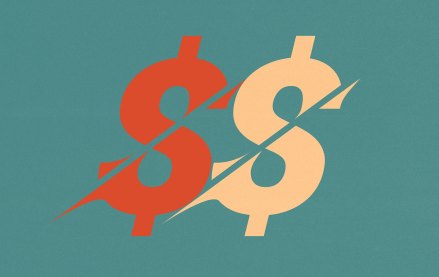Media Buying Briefing: Handicapping the 2025 national ad marketplace, from an investment POV

This Media Buying Briefing covers the latest in agency news and media buying for Digiday+ members and is distributed over email every Monday at 10 a.m. ET. More from the series →
They say the only constant is change, and that couldn’t be more true of the 2025 national advertising marketplace, as the U.S. experiences a new administration that seems both familiar and uncertain, and as major platforms’ and publishers’ futures adopt new stances or hang in the balance.
Meantime, a mini-version of musical chairs has beset the national investment teams at a handful of holding companies — the latest change at GroupM, where Matt Sweeney is leaving his post as U.S. chief investment officer. GroupM didn’t respond to requests for information about Sweeney’s replacement.
The news follows the recent departure by Geoff Calabrese from Omnicom Media Group, where he had been the longtime chief investment officer until December when he was named CEO of North American investment — he joined Publicis Groupe (not Publicis Media) as chief commercial officer. Katie Klein moved into the OMG chief investment officer role in December.
So what does this all mean for investment execs heading into 2025? It means a curious mixture of optimism at the opportunity uncertainty can create, and trepidation due to clients holding back long-term spending plans and platforms in flux.
“The words I keep coming back to are chaos and caution,” said one investment executive at a major agency who spoke on condition of anonymity. “There’s so much change right now.”
Jeff Matisoff, New York-based partner at Brandtech Group’s Jellyfish, believes generative AI’s ability to improve and speed workflows, will be the biggest factor but also the biggest change for buyers this year. “It started in creative, but it’s here for media — it’s here to save our teams and be valuable to our clients,” said Matisoff. “It’ll make the billions and billions of dollars that we are accountable for more disciplined and more actionable. Then we can put those hours to work across strategy, across creativity, across meeting with partners, across working for our clients again — those are all the fun things. Nobody wants to be doing duplicative, manual entry stuff. AI’s gonna save us from that.”
If you take the IAB’s word via its 2025 Outlook study, which surveyed media buyers and clients, the big beneficiaries of the 2025 marketplace will be connected TV, social media and retail media, which will enjoy double-digit percent growth this year. Linear TV will dip sharply due to the absence of major tentpole events. Overall, the IAB predicts 7.8% growth in ad spend, more modest than 2024’s 11.4% over the prior year.
Although most of the five investment executives Digiday spoke with declined to speak on the record, in order to speak more freely about marketplace conditions, two did: Matisoff and OMG’s Klein.
Klein takes a decidedly optimistic outlook on the 2025 marketplace. She credits traditional media companies for investing in tech to offer more modern forms of delivery and investment but also is encouraged by tech platforms continuing to invest more in content.
“We’re seeing more of a democratization across all of these platforms where from the client side and the buying side, we have a lot of options,” said Klein. “The options that are there for our clients are very compelling. And the companies that are really able to fully utilize their entire portfolios, their scale, the diversified content, and their entry into better tech and capabilities that can drive business outcomes, are the ones that are going to stand out.”
Here’s a breakdown of the expected beneficiaries in the national ad marketplace, and those at risk of having a tougher year.
The winner
Every buyer agreed that sports is the biggest draw for clients — Klein even cited Disney’s recent move to make live sports biddable. That strength will carry through the year, said one major investment exec at a holding company.
“Sports has been very healthy, even with increased inventory out there,” said the exec. “Whether it’s women’s sports or just standard NFL, we’ve got more of it, yet they’re not having any problem selling it.”
The exec added that Fox has harnessed advertiser demand for inventory in the Super Bowl to secure increases across its roster of content (including its streaming platform Tubi). “I’ve got people internally bitching and moaning about how Fox is treating them, because they’re raising their prices on all the different programming. And it’s like guys, they’ve had a great marketplace for Super Bowl, and they demanded match spending, which then takes additional inventory out of the marketplace. And they’re in a good position. Put yourself in their shoes.”
In the middle
Connected TV will certainly benefit as well, although the 2024 market was a correction year for many of the major streamers — thanks in no small part to Amazon Prime’s move to make its entire subscriber base ad-supported. An investment exec at a second holding company who also spoke on background said the demand remains strong, but pricing is still finding its water level.
“Pricing came down because [CTV] was a much newer property a couple years ago, and everyone was finding their footing,” said the exec. “And I think they realized that they can’t price streaming like broadcast prime time — that math equation doesn’t work.”
The loser
Like it or not, linear TV is going to keep losing market share, agreed the buyers, as it keeps shedding audience share due to cord cutting. Any cable network group that doesn’t have a streaming option in its portfolio is especially doomed. The first holding company executive on background pointed out that Fox was especially wise to have unloaded its cable networks at outset of its downward slide.
Finally, where does brand safety land as a factor in 2025, given changes among major platforms and the dissolution of brand safety providers like the Global Alliance for Responsible Media? The second holdco exec described it as “always high on the Richter scale” for agencies, but said its effect on pricing is negligible — it’s more about whether clients are comfortable taking a risk or not, which makes it more subject to budgetary shifts.
“Clients all have different concerns,” said the exec. “Some are super sensitive, but some on the other spectrum are like, ‘Yeah, I’m selling toilet paper, I don’t care.’”
What about the upfronts?
With each passing year, more content elements — from linear TV to streaming to social video to retail media to live shopping and even influencer content where relevant — are factored into upfront negotiations, making it vastly more complex than the 1980s when buyers lined up for their ad commitments across three broadcast networks.
“Trying to get your clients to think about this as one [marketplace], as well as your agency groups, is challenging, let alone having somebody who can coordinate all those pieces at a holding company level,” said the first holding company executive. “If the digital people don’t want to provide budgets on the linear timetable, well, that’s a problem.”
To the second holdco exec, flexibility from the media partners is key, mostly because clients are acting more in the short-term with their budgets. “Clients want and need that flexibility,” the exec said. “Half the clients aren’t ever really prepared with budgets that early in the process to talk about [investing in content] almost a year ahead of time. They’re still worrying about tomorrow’s issues.”
Color by numbers
It’s helpful to have a snapshot look at which channels and media options can expect a boost in revenue, and which will lose out. WARC’s The Future of Media 2025 report offers a general idea of which media more than $1 trillion in spend will favor or spurn. One tricky element to the percentages: they’re a “net sentiment percentage,” calculated by the percentage of respondents expecting an increase minus the percent expecting a decrease. Let’s look at the gainers and losers.
Gainers:
- Online video (65%)
- Social media (55%)
- Influencer/creator marketing (50%)
- Online search (39%)
- Mobile (37%)
- Podcasts (36%)
- Retail media (32%)
- Gaming (24%)
- Online display (21%)
- Sponsorship (14%)
- OOH (10%)
Losers:
- Radio/audio (excluding podcast) (-8%)
- Mail (-8%)
- TV (-17%)
- Cinema (-17%)
- Print (-42%)
Takeoff & landing
- Dentsu named Giulio Malegori, currently evp and global COO, to be its chairman and acting CEO of Dentsu Americas, replacing Michael Komasinski, who left his post as CEO of Dentsu Americas and global president of data & technology to become CEO of Criteo.
- Stagwell made its first acquisition of the year, buying Japan-based marketing services firm ADK Global and giving the holdco deeper access into the APAC region. ADK handles clients including Adidas, LG and Google.
- Out-of-home media specialist Billups named Ranganathan Somanathan to be its first chief global growth officer, as the agency continues to expand globally. Also, Jaime Byrdak was named CEO, North America.
Direct quote
“Escalating sports rights are putting pressure on non-sports content budgets, as sports become an increasingly key programming component for media companies. The rising cost of broadcasting sports is causing streaming services to scrutinize their non-sports spending, making smaller independent film and TV studios particularly vulnerable. … Content, mainly supported by strong established IP and franchises, remains king.”
—Naveen Sarma, U.S. media & entertainment managing director, S&P Global Ratings
Speed reading
- Since the fate of TikTok hangs in the balance, several colleagues have been covering the latest implications, starting with who plans to benefit from a possible ban, written by Krystal Scanlon and Tim Peterson. Meanwhile, Antoinette Siu and Alexander Lee looked at where creators may be taking their content.
- WorkLife’s Tony Case did a deep dive on the implications of WPP’s move to demand employees return to the office at least 4 days a week.
- Kimeko McCoy and Sam Bradley looked into potential winners and losers in the wake of Amazon’s decision to make its retail media technology available to other retailers.
More in Media Buying

Why Pinterest wants to buy tvScientific, and what it signals for the CTV ads business
Corporate development sources estimate the deal valuation to be above $300 million, claiming tvScientific’s gross revenue is approximately $100 million.

Ad Tech Briefing: How the experts predict digital ad spend will pan out in 2026
Advertisers are placing greater emphasis on price and performance, often at the expense of transparency and control.

Crossmedia and Mile Marker make moves now to grow in their rosters in 2026
Both independents made executive moves to harness a potential windfall of clients leaving the holding companies for better service and results.








